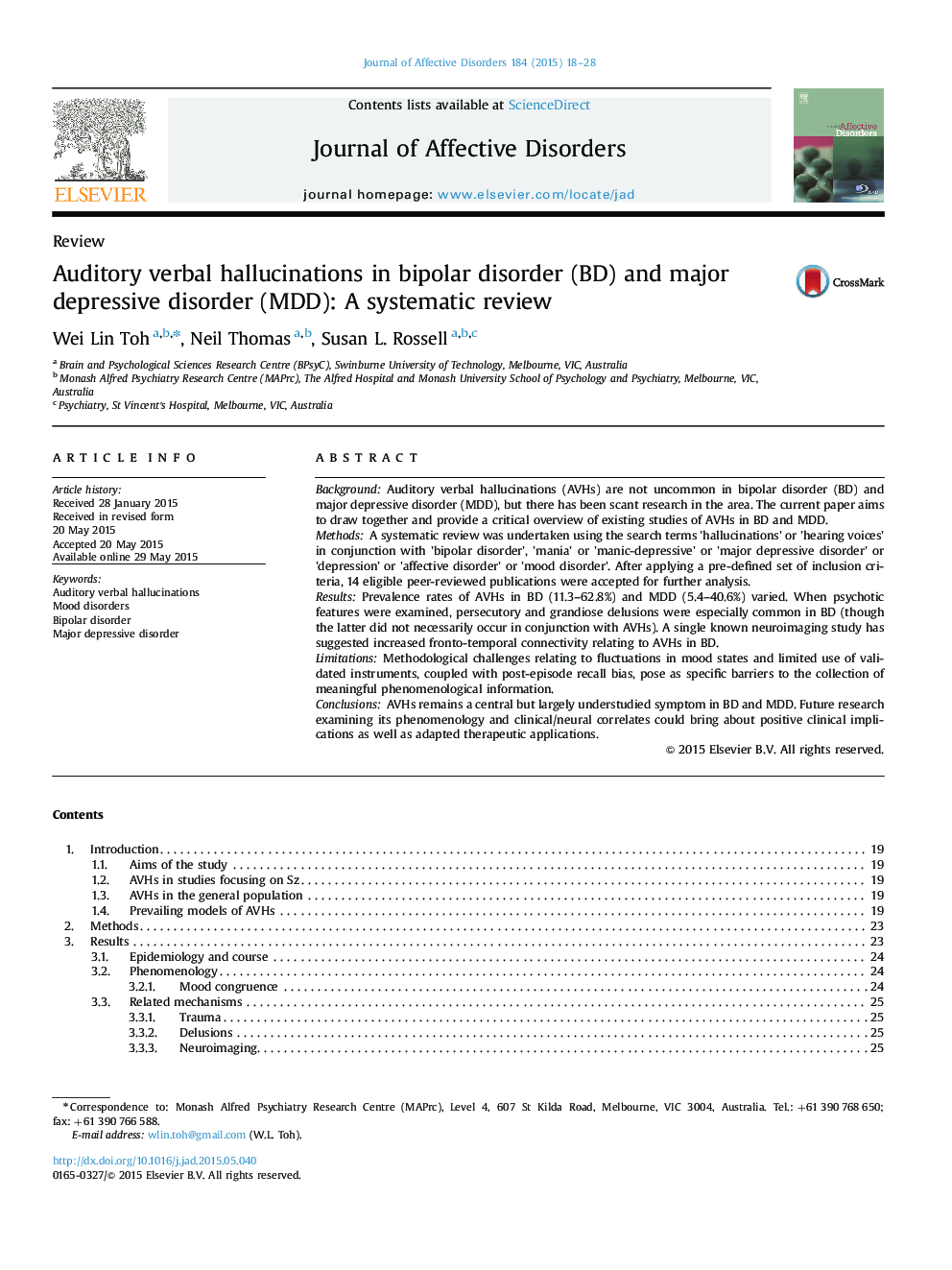| Article ID | Journal | Published Year | Pages | File Type |
|---|---|---|---|---|
| 6231233 | Journal of Affective Disorders | 2015 | 11 Pages |
â¢There is limited study of the phenomenology of 'hearing voices' in mood disorders.â¢Future studies should focus on its co-occurence with delusions and mood congruence.
BackgroundAuditory verbal hallucinations (AVHs) are not uncommon in bipolar disorder (BD) and major depressive disorder (MDD), but there has been scant research in the area. The current paper aims to draw together and provide a critical overview of existing studies of AVHs in BD and MDD.MethodsA systematic review was undertaken using the search terms 'hallucinations' or 'hearing voices' in conjunction with 'bipolar disorder', 'mania' or 'manic-depressive' or 'major depressive disorder' or 'depression' or 'affective disorder' or 'mood disorder'. After applying a pre-defined set of inclusion criteria, 14 eligible peer-reviewed publications were accepted for further analysis.ResultsPrevalence rates of AVHs in BD (11.3-62.8%) and MDD (5.4-40.6%) varied. When psychotic features were examined, persecutory and grandiose delusions were especially common in BD (though the latter did not necessarily occur in conjunction with AVHs). A single known neuroimaging study has suggested increased fronto-temporal connectivity relating to AVHs in BD.LimitationsMethodological challenges relating to fluctuations in mood states and limited use of validated instruments, coupled with post-episode recall bias, pose as specific barriers to the collection of meaningful phenomenological information.ConclusionsAVHs remains a central but largely understudied symptom in BD and MDD. Future research examining its phenomenology and clinical/neural correlates could bring about positive clinical implications as well as adapted therapeutic applications.
